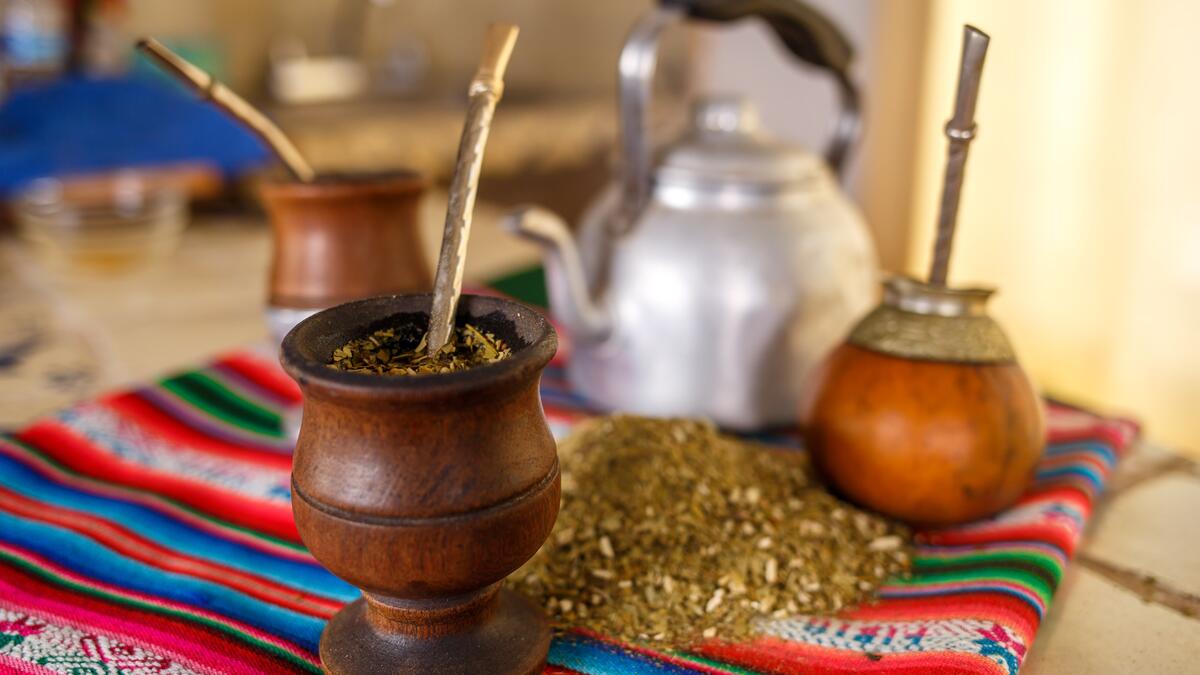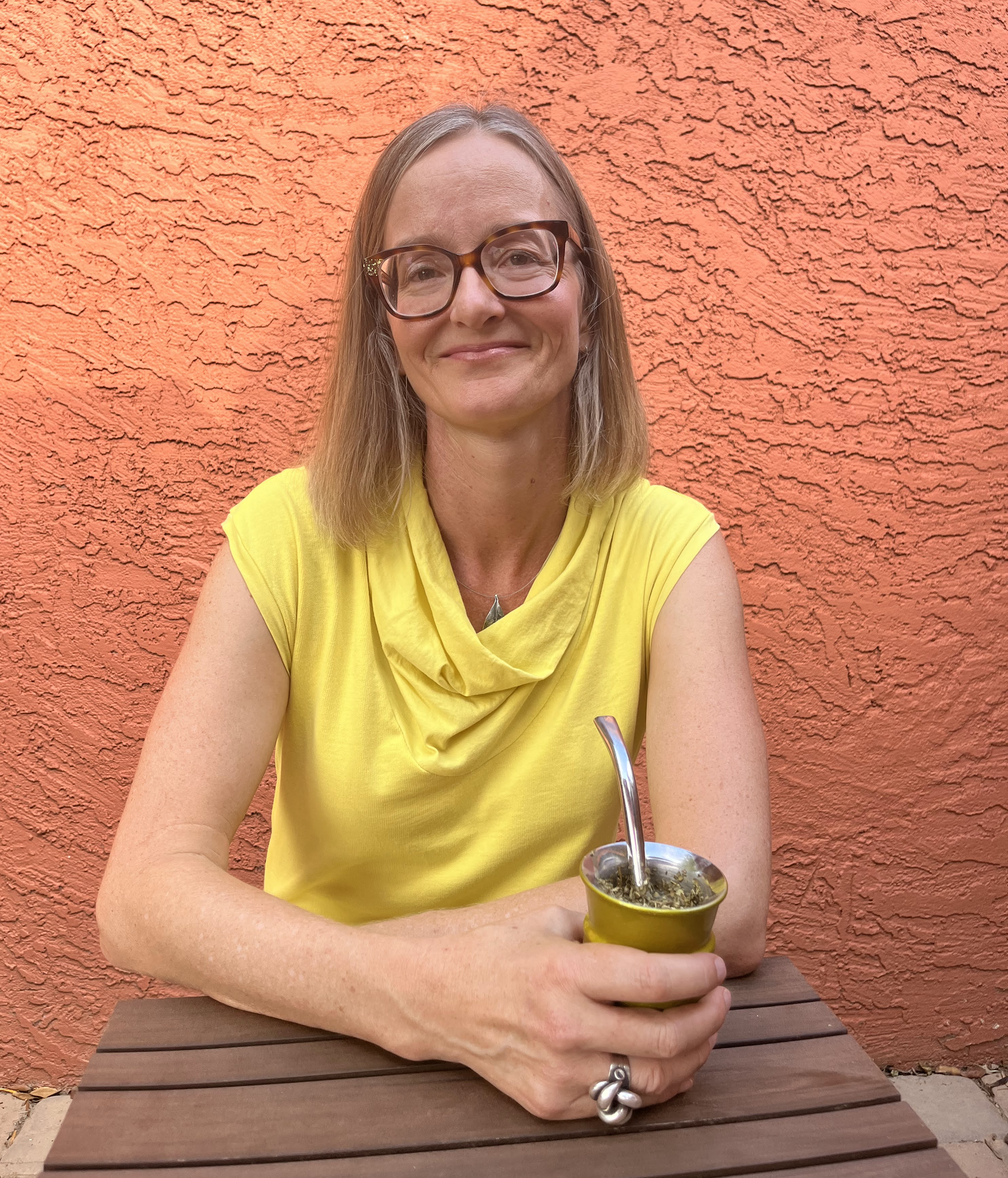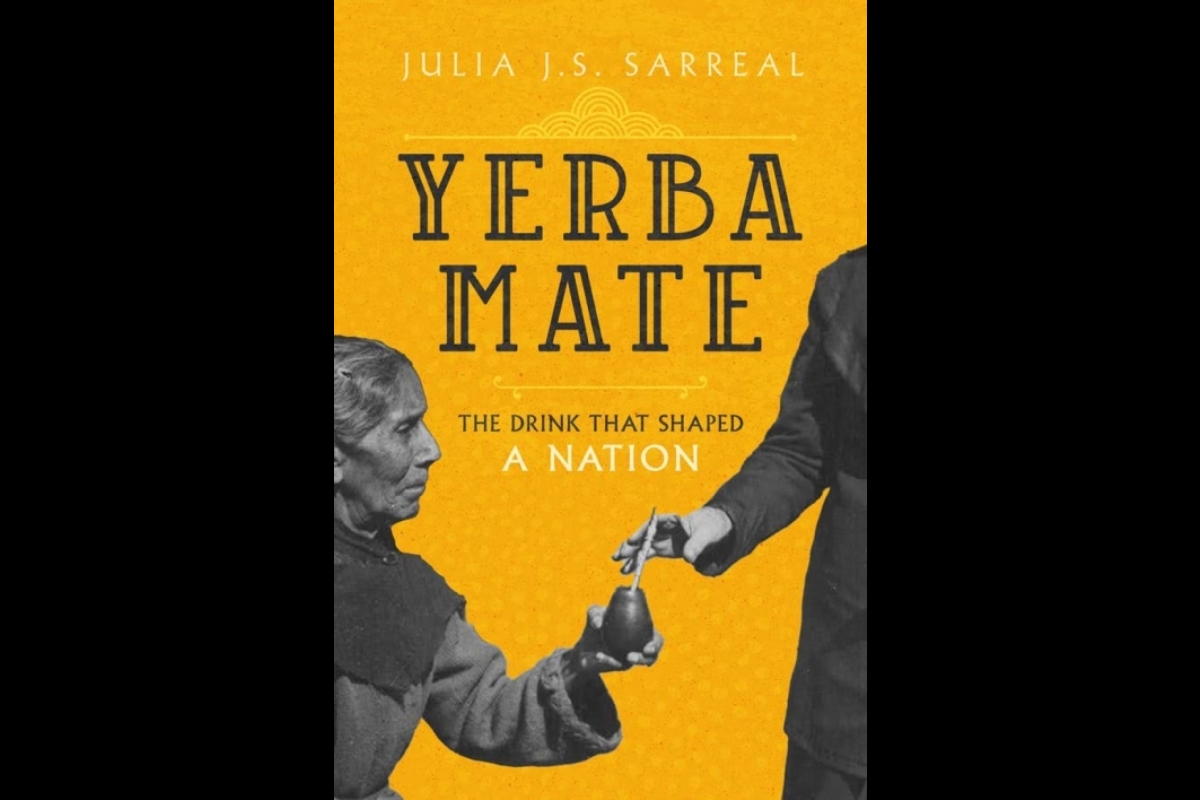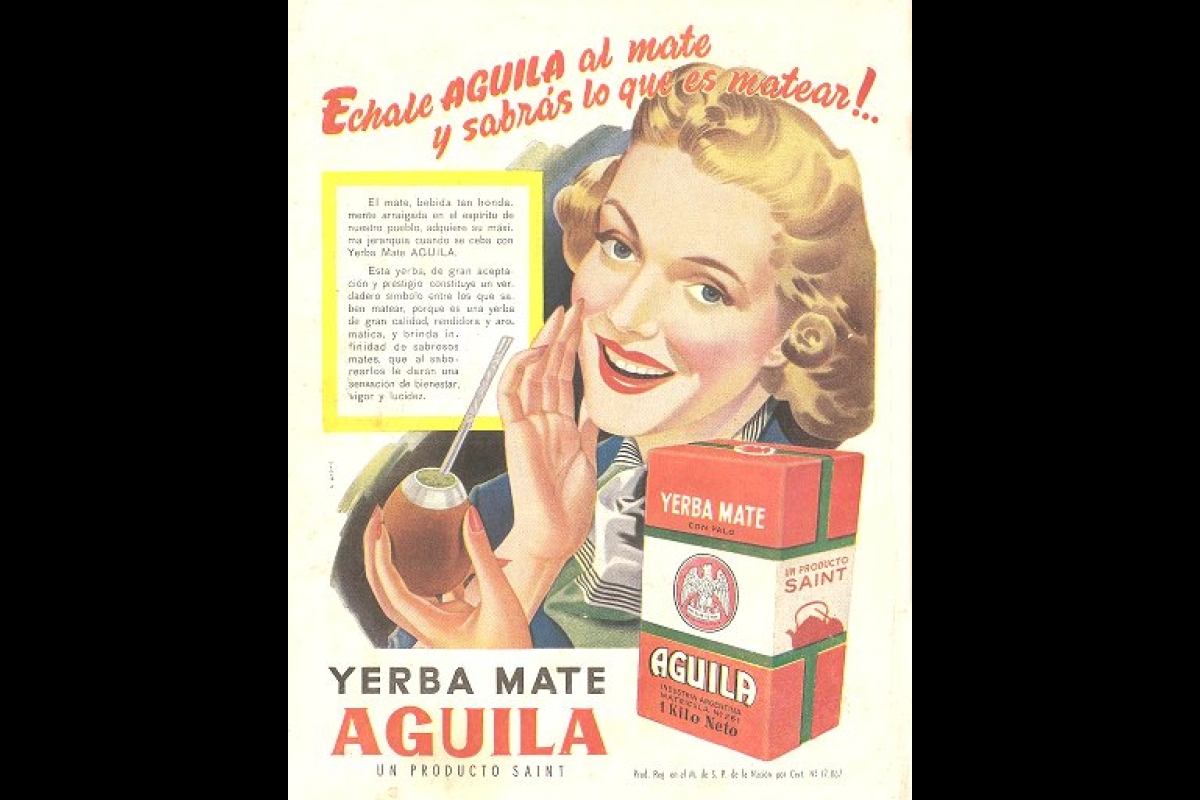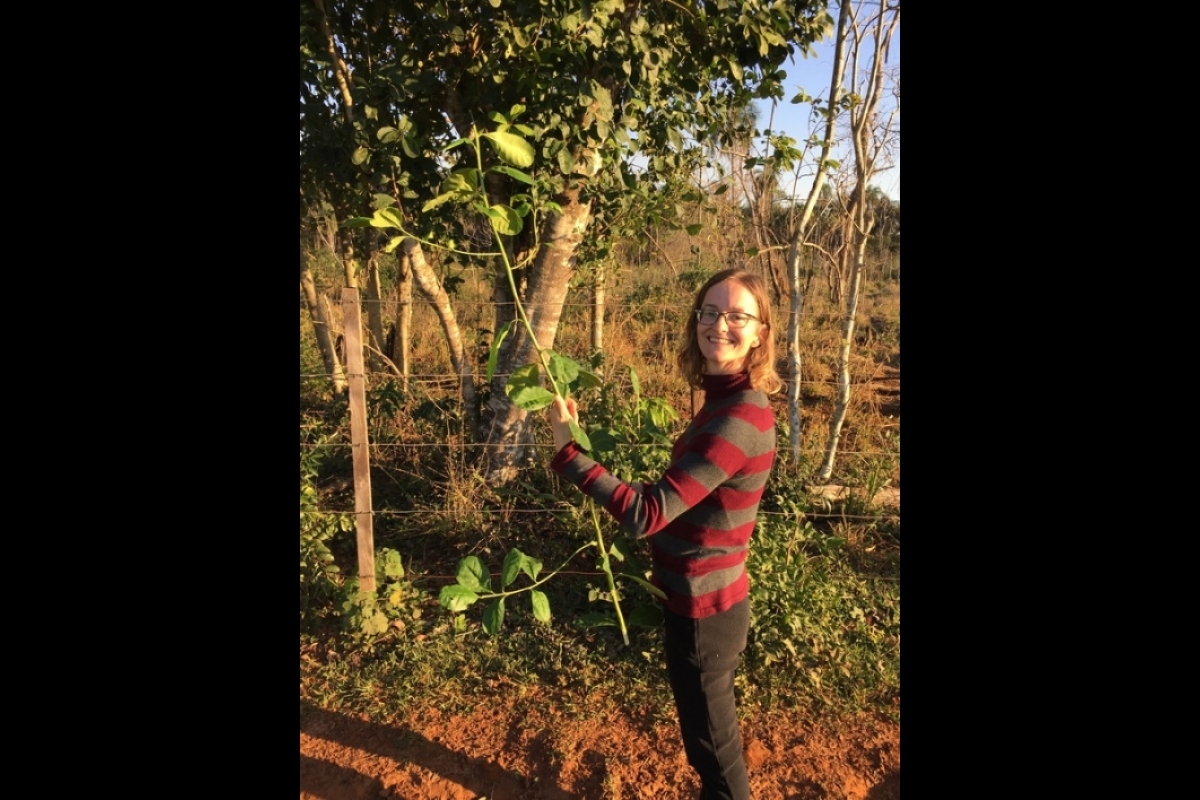If you browse the energy drink aisle at any grocery store you’ll find a great variety of canned, caffeinated options, including an abundance of coffees, nitro cold brews and sugary carbonated beverages, that can help you feel awake or focused. But in recent years, you may have noticed something different on the shelf — yerba mate.
Julia Sarreal
Yerba mate is a caffeinated drink with Indigenous origins that is widely consumed in South America, especially in Argentina, Brazil, Paraguay and Uruguay. The bitter, herbal, tea-like beverage is brewed from the leaves of a native species of holly tree that can be found in the forests of South America.
Over the centuries, the drink’s popularity in Argentina faltered at times as coffee and tea took hold of the caffeinated beverage market. However, because of its unique qualities and distinctive flavor, the beverage has seen a resurgence since the 1980s. In fact, yerba mate is so popular that South American soccer players brought over 1,000 pounds of yerba mate with them to the World Cup in Qatar last year.
Arizona State University Associate Professor Julia Sarreal of the School of Humanities, Arts and Cultural Studies has dedicated years of her career studying and uncovering the origins, production and cultural significance of yerba mate. In her new book, “Yerba Mate: The Drink That Shaped a Nation,” Sarreal shares her findings on the evolution and storied history of the beverage. Here, she discusses her book and the story of South America’s favorite caffeinated beverage.
Question: How did this book come about and how did yerba mate become a topic of interest for you?
Answer: The roots of this project started in 1998 when I was a Peace Corps volunteer in rural Paraguay — that was the first time I was exposed to yerba mate. Everyone drank it, and sharing it was critical to integrating into the community. All of the Peace Corps volunteers learned to drink it. My intellectual fascination with yerba mate was sparked several years later while living in Buenos Aires for doctoral research on a different topic. I was intrigued by the co-existence of yerba mate with the vibrant coffee culture in the city. After finishing my dissertation and turning it into a book, I turned to researching yerba mate.
Trained as a colonialist, I was originally going to do this project about yerba mate in the colonial time. But whenever I spoke with anybody, be it somebody in South America or be it somebody in the United States, and I told them I'm going to be working on yerba mate in the colonial period, they immediately would turn to the present day. So it became very apparent to me that I couldn't just study the colonial period; the evolution of yerba mate to the present day was really interesting to people.
Q: How would you describe yerba mate to those who have never tried or heard of it?
A: It's a caffeinated beverage that comes from the holly family — and it's a tree, not a plant like tea, but it's very similar to tea and coffee, especially with the caffeine; it's a stimulant. In South America, it is very closely tied to national identity. It's a symbol of being Argentine and being from this region of Paraguay, Uruguay, Argentina and southern Brazil. It's also a social practice in South America — the idea of sharing mate is really important. In South America, a gourd is typically filled with yerba mate, and there's the bombabilla, or special straw. Then you pass it around; it's a shared drink.
About 10 or 15 years ago, the brand Guayakí came onto the scene in the United States. They started with tea bags, and then they moved to mate lattes and eventually got to the product we see today. … I like to think of it as a healthy energy drink. There's different iterations of yerba mate. There’s the traditional South American version, and then the canned and bottled energy drink is really big with college students, artists and musicians. They're completely different things.
Q: What makes your research stand out among other research on yerba mate?
A: I look at both the production and the consumption. It's very unique the way that it's consumed, and so people have looked into the folklore surrounding mate: What is the meaning of drinking mate? What is it a symbol of? That's all very important, but on the flip side, I think we also need to study the production of it because the production of it is what makes it possible to buy yerba mate.
It's very inexpensive in South America, and consumers demand it to be so in Argentina. The government has always given subsidies or implemented price controls in order to keep the price of yerba mate accessible to workers. In order to understand how it's inexpensive and the meaning of that, it's important to look at the production.
Read more: South American drink ritual a window into culture
Q: What was the research process like for your book?
A: For my first book about the Catholic missions among the Guaraní in 18th-century Paraguay, I used a lot of accounting statistics and data analysis in order to figure out what daily life was like for the Guaraní. Given the importance of yerba mate as both a food ration for the native people and a commercialized product that generated large revenues, I already had a lot of the material to start this project.
My first research trip was a summer trip to Madrid and Seville (funded by an Institute for Humanities Seed Grant) where a lot of documents from the period of Spanish rule are housed. I found some really good materials that gave me a big-picture understanding of the role yerba mate played in the Spanish Empire. But the bulk of the material for the book was obtained in Argentina when a yearlong sabbatical enabled me to immerse myself in my research. I visited various archives, libraries and government ministries, in addition to making several trips to the yerba-producing region in the northeastern part of the country. In the U.S., I received summer fellowships to do research at the John Carter Brown Library at Brown University and the Huntington Library in Pasadena.
The research has been a lot of fun. And, of course, I've found a lot of material on the internet. As historians, we have to kind of be detectives, sleuthing around for information. I'm fortunate that I have been able to travel to a number of places for my research — it has led to a much more comprehensive understanding of yerba mate over time and what it teaches us about Argentina.
Q: How do you incorporate your research on yerba mate into the classroom?
A: I use my research on yerba mate in all of my classes. I find that it fits with most everything. I use it when I teach about food in Latin America, when I teach colonial Latin America, when I teach modern Latin America, and I teach it in my commodities class also. If it's an in-person class, I always come with a suitcase full of yerba mate paraphernalia to show the students.
Before COVID-19, I would share it with everybody; I would first serve it and then I'd have somebody volunteer and they would serve it to the class. Now I bring tea bags to share while I drink it out of the gourd. I pass around the loose leaf so they can smell it and such. Almost every semester I've had a student that's picked up the habit — not just the tea bags or the Guayakí — they use the gourd or they make it in a French press. My students will send me pictures of it if they find it at the supermarket; that’s always fun to see. I think it has a lot of relevance and students appreciate that.
More Arts, humanities and education

Upcoming exhibition brings experimental art and more to the West Valley campus
Ask Tra Bouscaren how he got into art and his answer is simple.“Art saved my life when I was 19,” he says. “I was in a dark place and art showed me the way out.”Bouscaren is an …

ASU professor, alum named Yamaha '40 Under 40' outstanding music educators
A music career conference that connects college students with such industry leaders as Timbaland. A K–12 program that incorporates technology into music so that students are using digital tools to…

ASU's Poitier Film School to host master classes, screening series with visionary filmmakers
Rodrigo Reyes, the acclaimed Mexican American filmmaker and Guggenheim Fellow whose 2022 documentary “Sansón and Me” won the Best Film Award at Sheffield DocFest, has built his career with films that…


